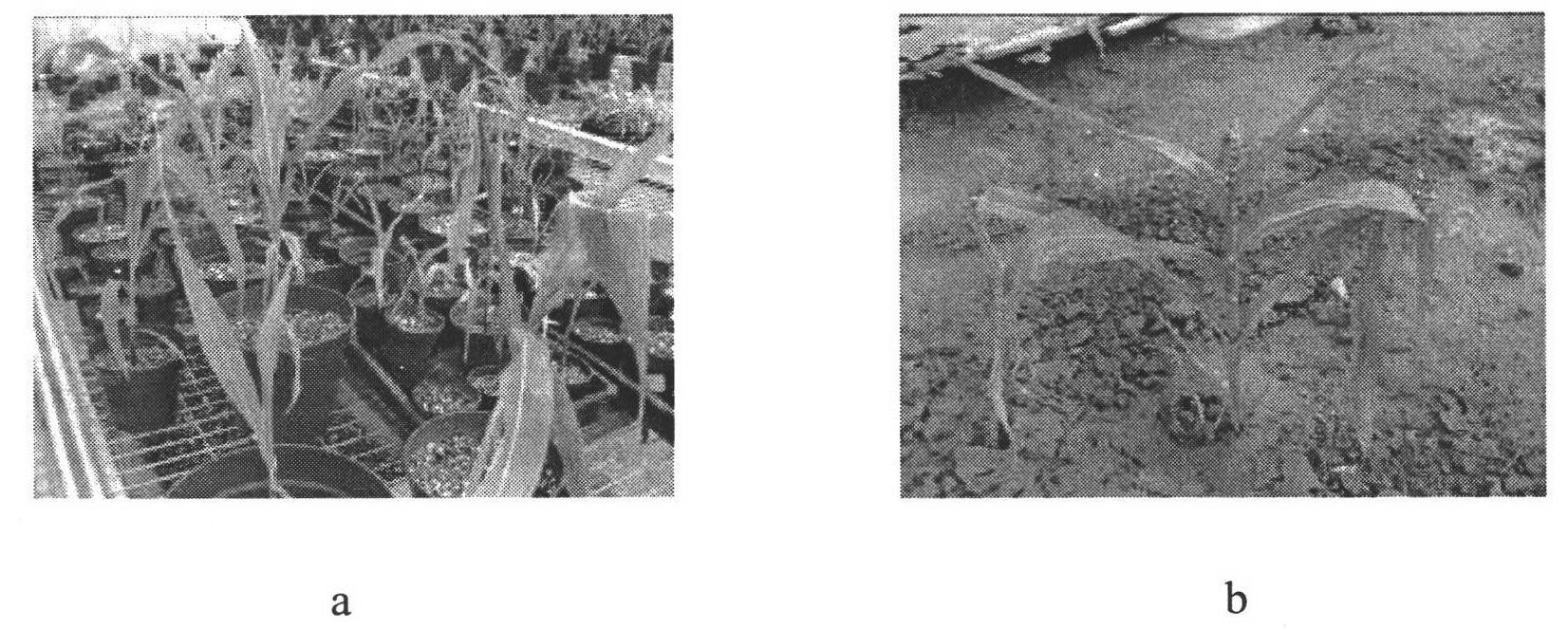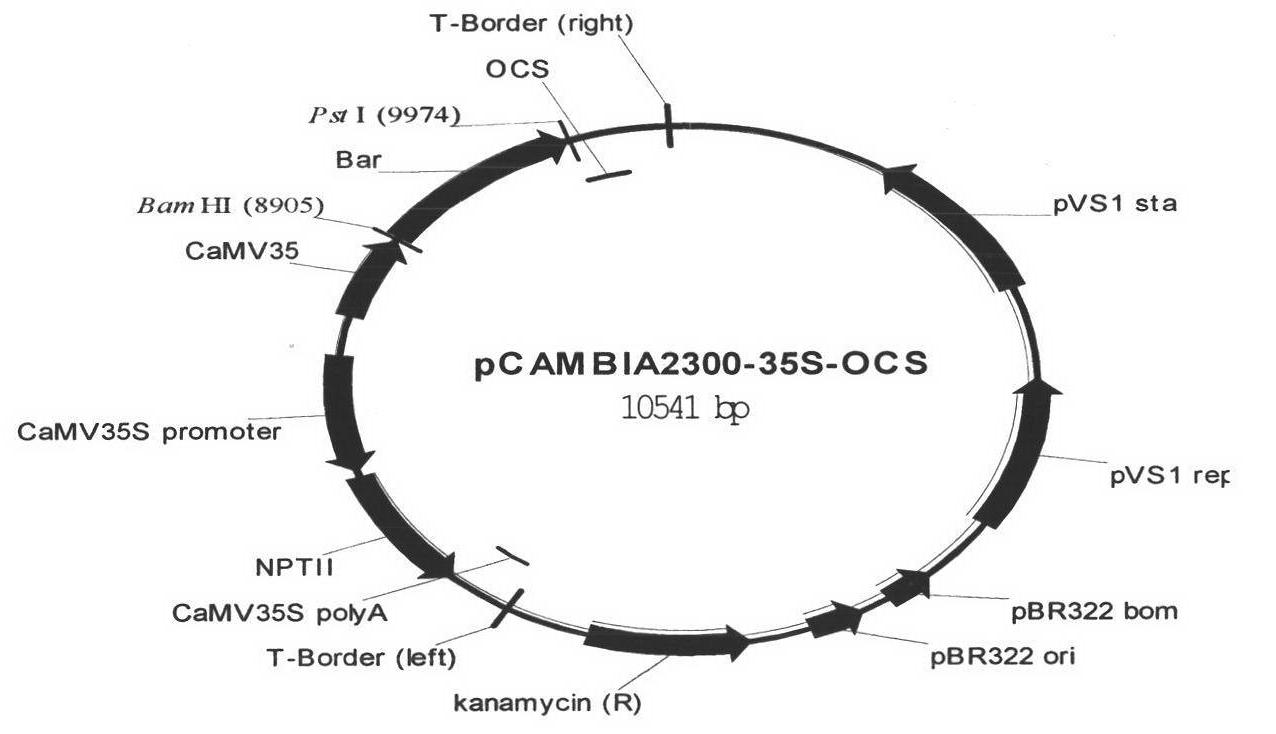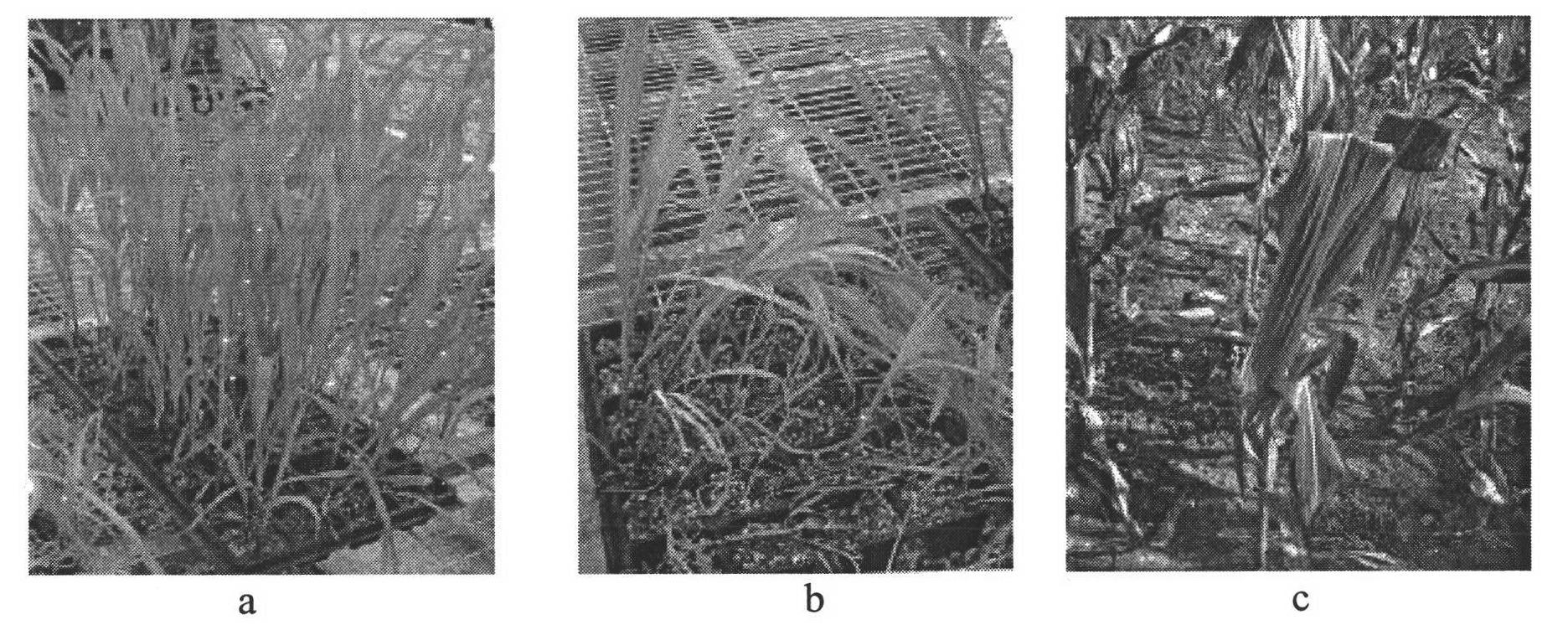Method for in-situ transgenosis of corn mature embryo
A technology of transgenic and mature embryos, which is applied in the field of in situ transgenic corn mature embryos, can solve the problems of low transformation efficiency, low seed setting rate, cumbersome operation, etc., and achieve the effects of high transformation rate, short production cycle and simple operation
- Summary
- Abstract
- Description
- Claims
- Application Information
AI Technical Summary
Problems solved by technology
Method used
Image
Examples
Embodiment 1
[0041] 1) Obtaining the infusion solution of Agrobacterium tumefaciens EHA105 for the in situ transgenic method of maize
[0042] ① The process of constructing vector pCambia2300-Bar and transforming Agrobacterium tumefaciens EHA105 competent cells is as follows:
[0043] Using the Bar gene as a template, the two ends of the upstream and downstream primers were respectively introduced into the Xho I restriction site for PCR amplification. Then, the PCR product and the pCambia2300 plasmid were digested with Xho I, respectively, and the digestion products of the two were ligated: 16°C for 16 hours. The ligation product was transformed into TOP10 Competent Cell (purchased from Tiangen Biochemical Technology Co., Ltd. Cat#CB104, Lot#J8713), and spread on the LB plate containing kanamycin. PCR was performed using the target gene as a template to obtain a 552bp product, and a 1576bp target band was identified by digestion with BamH I and Sal I. The final sequencing verification res...
PUM
| Property | Measurement | Unit |
|---|---|---|
| Length | aaaaa | aaaaa |
Abstract
Description
Claims
Application Information
 Login to View More
Login to View More - R&D
- Intellectual Property
- Life Sciences
- Materials
- Tech Scout
- Unparalleled Data Quality
- Higher Quality Content
- 60% Fewer Hallucinations
Browse by: Latest US Patents, China's latest patents, Technical Efficacy Thesaurus, Application Domain, Technology Topic, Popular Technical Reports.
© 2025 PatSnap. All rights reserved.Legal|Privacy policy|Modern Slavery Act Transparency Statement|Sitemap|About US| Contact US: help@patsnap.com



